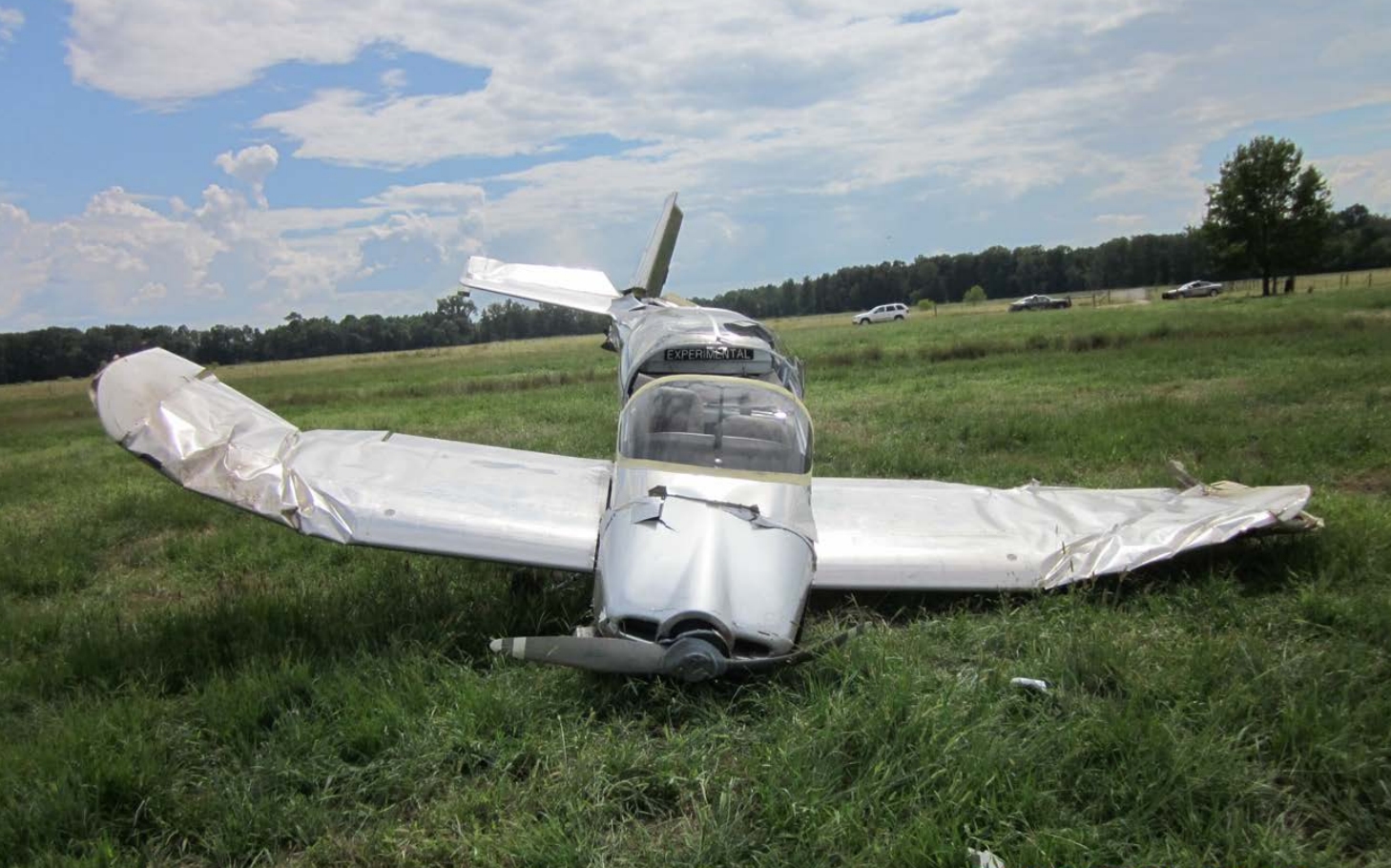
ASN Wikibase Occurrence # 179363
This information is added by users of ASN. Neither ASN nor the Flight Safety Foundation are responsible for the completeness or correctness of this information.
If you feel this information is incomplete or incorrect, you can submit corrected information.
| Date: | Monday 7 September 2015 |
| Time: | 10:00 |
| Type: |  Van's RV-6A |
| Owner/operator: | Private |
| Registration: | N555TN |
| MSN: | 23623 |
| Year of manufacture: | 2011 |
| Engine model: | Lycoming O-320-E3D |
| Fatalities: | Fatalities: 0 / Occupants: 1 |
| Aircraft damage: | Substantial |
| Category: | Accident |
| Location: | near Richard B. Russell Regional Airport (KRMG), Rome, GA -
 United States of America United States of America
|
| Phase: | Landing |
| Nature: | Private |
| Departure airport: | Rome, GA (RMG) |
| Rome, GA (RMG) | |
| Investigating agency: | NTSB |
| Confidence Rating: |
The private pilot stated that, during the preflight inspection, he used a dipstick to measure fuel quantity; the right tank contained 3 gallons, and the left tank contained 6 gallons. He noted that the fuel level was low but determined that it was adequate for two or three touch-and-go landings. The pilot departed with the fuel selector positioned to the left tank, where it remained for the entire flight. After one landing and one low approach, the engine experienced a total loss of power while the airplane was on an extended left crosswind leg of the airport traffic pattern. The pilot performed a 180° left turn toward the opposite direction runway. After an unsuccessful attempt to restart the engine, the pilot determined that the airplane would not be able to glide to the runway and performed a forced landing to a field. During the landing, the wings and fuselage sustained substantial damage.
Examination of the wreckage did not reveal evidence of any preimpact mechanical malfunctions. Both fuel tanks remained intact. About 1.5 gallons of fuel was present in the left fuel tank. The right fuel tank was absent of fuel, and no fuel was present in the fuel strainer. Each fuel tank had a capacity of 19 gallons, of which about 1 gallon in each tank was unusable.
Probable Cause: The pilot's inadequate preflight inspection and fuel planning, which resulted in a total loss of engine power due to fuel exhaustion.
Accident investigation:
 |
|
Sources:
NTSB
FAA register: http://registry.faa.gov/aircraftinquiry/NNum_Results.aspx?NNumbertxt=555TN
Location
Images:

Photo: FAA
Revision history:
| Date/time | Contributor | Updates |
|---|---|---|
| 07-Sep-2015 18:26 | Geno | Added |
| 07-Sep-2015 19:02 | Hans Gruber | Updated [Date] |
| 25-Jun-2016 20:23 | junior sjc | Updated [Aircraft type] |
| 21-Dec-2016 19:30 | ASN Update Bot | Updated [Time, Damage, Category, Investigating agency] |
| 24-Jun-2017 06:15 | junior sjc | Updated [Location, Nature] |
| 24-Jun-2017 17:18 | junior sjc | Updated [Narrative] |
| 16-Sep-2018 18:16 | ASN Update Bot | Updated [Time, Nature, Departure airport, Destination airport, Source, Narrative, Accident report, ] |
| 16-Sep-2018 18:55 | harro | Updated [Source, Narrative, Photo] |
Corrections or additions? ... Edit this accident description
The Aviation Safety Network is an exclusive service provided by:


 ©2024 Flight Safety Foundation
©2024 Flight Safety Foundation